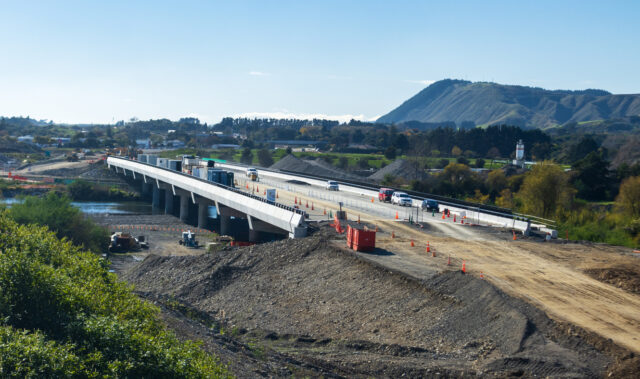By David Jenkins and Steve Verity
Infrastructure is a significant focus in New Zealand. The Government recently announced several key priorities, including a 30-year National Infrastructure Plan.
As Prime Minister Christopher Luxon has said, the National Infrastructure Agency has been created to remove politics from infrastructure and create a pipeline of projects with a bipartisan commitment.
These are welcome developments because New Zealand has an infrastructure deficit, which the Infrastructure Commission, Te Waihanga, estimates at NZ$210 billion over the next 30 years as many of the public assets built in the 1950s and 1960s are nearing the end of their lifecycles.
Infrastructure Minister Chris Bishop remains focused on improving funding and financing, the planning and consenting framework, education and health infrastructure, and strengthening asset management and resilience.
Minister Bishop recently said he was “shocked” that New Zealand is ranked fourth to last in the Organisation for Economic Co-operation and Development (OECD) for asset management and “dead last” for the metric on Accountability and Professionalism.
It is worth quoting from one of his recent speeches, in which he acknowledged that “one of the biggest challenges facing New Zealand’s infrastructure is the cost and resources we need to repair and replace assets that are wearing out.”
“For every $40 we spent on new infrastructure, we should be investing $60 in maintenance and renewals,” he said.
“I’m determined to improve asset management and ensure infrastructure providers operate in a system where good asset management is a bare minimum, not an optional throwaway.”
“To drive change, we’ll be exploring options around long-term capital planning, asset management plans, mandatory reporting, upskilling opportunities, accountability for poor performance, minimum standards, and stronger regulatory scrutiny and monitoring.”
Certainly, New Zealand needs new assets, and a good example is the recent identification of 15 roads of National Significance as part of a $20 billion land transport package. However, it’s not just about building new infrastructure. It’s also about appropriately looking after existing infrastructure over the long term. This should be the starting point rather than the afterthought.
A renewed focus on prioritising for the long-term will ensure that the upfront investment delivers maximum value over time.
As New Zealand’s Infrastructure Commission has noted, “If we want to maintain our infrastructure for future generations, around 60% of all investment needs to go to renewing existing assets.”
This applies not only to potholed roads and ‘creaky’ bridges but also to burst pipes and hospital buildings that need refurbishment.
Whenever the ribbon is cut at the opening of a new stadium, hospital or water treatment plant, the reality is that perhaps up to 40% of the asset’s lifecycle costs will have been spent up to that point.
The other 60% is the most critical component, as this will keep the asset performing and delivering optimally for the long term.
According to the OECD, around 65% of the building stock in 2060 has already been built, while in the cities, 80% of what will be needed in 2050 is already there.
The most recent OECD report on New Zealand makes some strong points about the nation’s economic challenges, summarising the need for “rebalancing towards more inclusive and sustainable growth.”
The current planning system has “not coped well” with urban expansion to accommodate a rapidly growing population, while climate change “will add further pressure.”
The OECD also notes that New Zealand’s local government sector will need extra revenue to pay for more resilient infrastructure, “and the planning system needs a more spatial approach.”
This resonates with the Government’s renewed approach to reviving infrastructure investment to meet future challenges.
Investment, however, is only one part of the solution.
Good management of infrastructure demands a long-term focus something that New Zealand must embrace. All of this aligns with the IPWEA playbook and our commitment to enhancing the quality of life for our communities.














